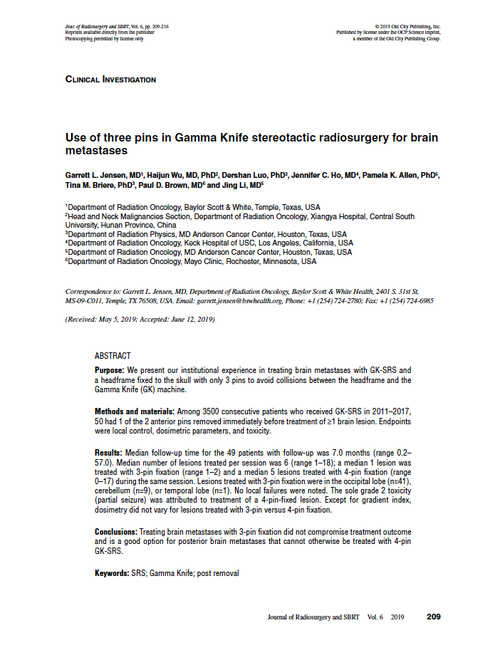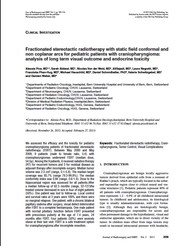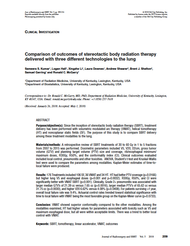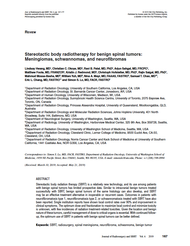- Home
- Journal Contents Downloads
- JRSBRT Downloads
- JRSBRT 6.3, p. 209-216
Product Description
Use of three pins in Gamma knife stereotactic radiosurgery for brain metastases
Garrett L. Jensen, Haijun Wu, Dershan Luo, Jennifer C. Ho, Pamela K. Allen, Tina M. Briere, Paul D. Brown and Jing Li
Purpose: We present our institutional experience in treating brain metastases with GK-SRS and a headframe fixed to the skull with only 3 pins to avoid collisions between the headframe and the Gamma Knife (GK) machine.
Methods and materials: Among 3500 consecutive patients who received GK-SRS in 2011–2017, 50 had 1 of the 2 anterior pins removed immediately before treatment of ≥1 brain lesion. Endpoints were local control, dosimetric parameters, and toxicity.
Results: Median follow-up time for the 49 patients with follow-up was 7.0 months (range 0.2–57.0). Median number of lesions treated per session was 6 (range 1–18); a median 1 lesion was treated with 3-pin fixation (range 1–2) and a median 5 lesions treated with 4-pin fixation (range 0–17) during the same session. Lesions treated with 3-pin fixation were in the occipital lobe (n=41), cerebellum (n=9), or temporal lobe (n=1). No local failures were noted. The sole grade 2 toxicity (partial seizure) was attributed to treatment of a 4-pin-fixed lesion. Except for gradient index, dosimetry did not vary for lesions treated with 3-pin versus 4-pin fixation.
Conclusions: Treating brain metastases with 3-pin fixation did not compromise treatment outcome and is a good option for posterior brain metastases that cannot otherwise be treated with 4-pin GK-SRS.
Keywords: SRS; Gamma Knife; post removal
After payment has been processed for your order of a digital copy (PDF) of this article, you will see a download link on your completed order page and also receive an email containing a download link. The links, which will enable you to download one copy of the article, will expire after 24 hours.
 Loading... Please wait...
Loading... Please wait...








